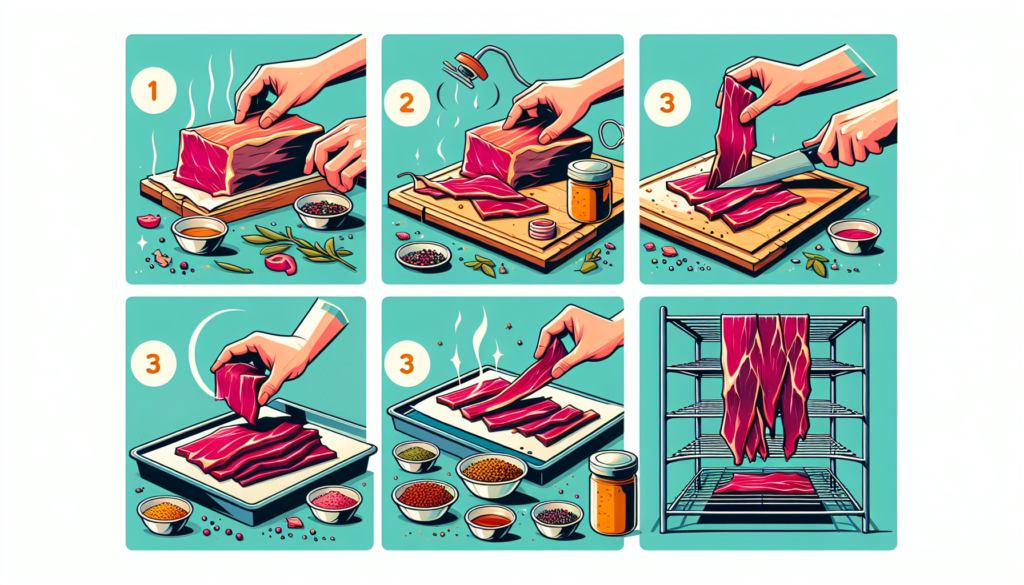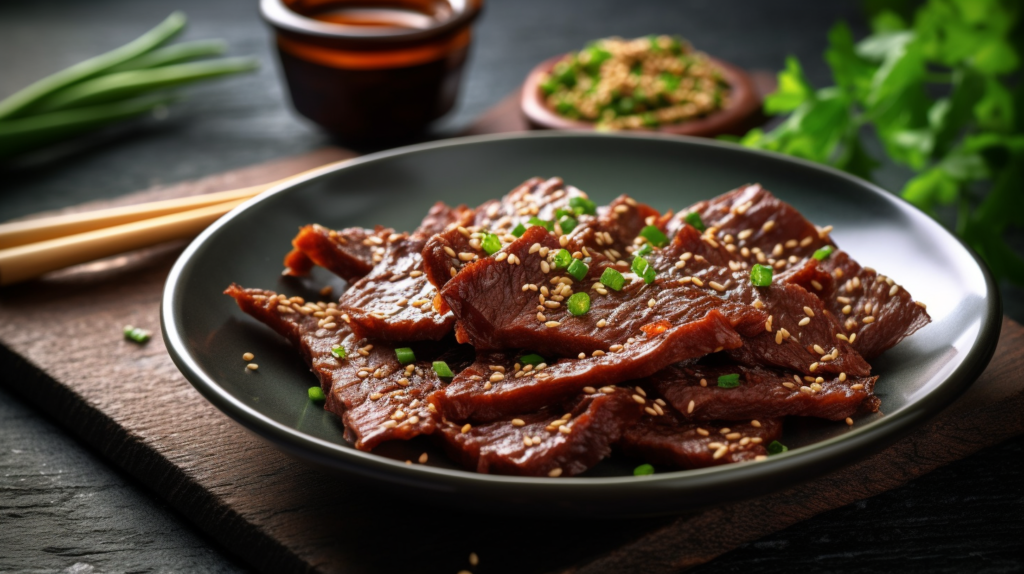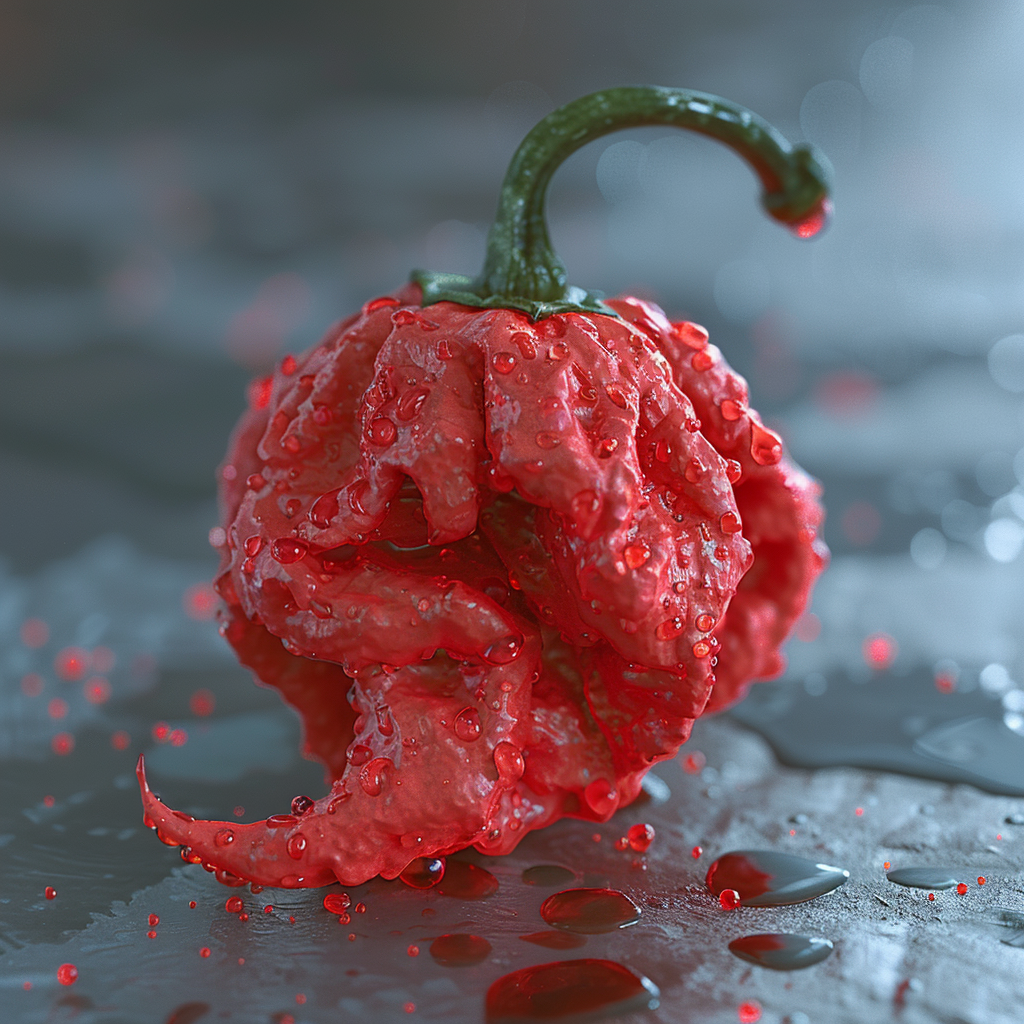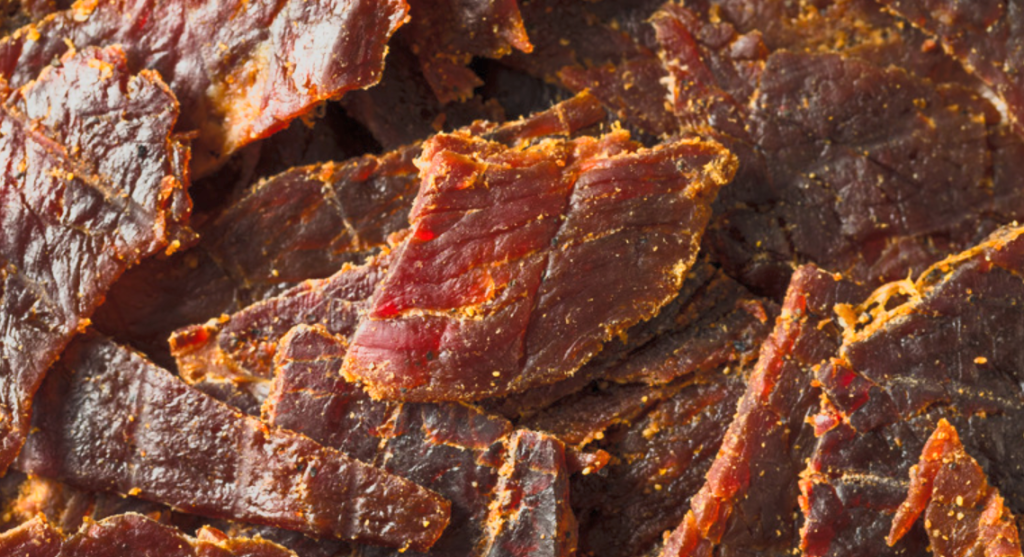
Hey there, Ronnie here. Let’s get real for a second. You know how it is when the munchies hit, and you’re digging through the pantry for something that hits the spot but doesn’t make you feel like you’ve just undone a week’s worth of gym work? Enter beef jerky. The lean, mean snack that’s been keeping folks satisfied for centuries. And if your idea of jerky is limited to those dry, tasteless strips from the gas station, you’re in for a treat. We’re diving deep into the world of beef jerky, from its humble beginnings to the high-tech ways it’s made today.
And for those of you wondering, “What in the world is beef jerky?”, or maybe you’re questioning, “Can dried meat actually be good for you?”, you’ve landed in the right spot. We’re talking about slices of lean trimmed meat, dried to perfection, making it the convenient snack that’s packed with flavor and protein. Beef jerky ain’t just a snack; it’s a craft, a tradition, and for many, a downright obsession. So, buckle up, and let’s get this jerky journey started.
The Essence of Beef Jerky
At its core, beef jerky is simplicity and taste packed into one. Imagine lean trimmed beef, seasoned, dried, and ready to be your go-to snack. This ain’t your everyday snack. It’s what you reach for when you need something solid to keep those hunger pangs at bay. Rich in flavor, packed with protein, and oh-so convenient, beef jerky stands out in a sea of snack options. And guess what? It’s also a healthier pick compared to many other quick bites out there. That’s the essence, the real deal about beef jerky.

Historical Significance
Would you believe it if I told you that beef jerky has been the snack of choice for great adventurers and travelers for centuries? It’s true. This protein-packed treat wasn’t born in a factory; it was made on the trails, in the wild, where preserving meat meant the difference between thriving and barely surviving. Beef jerky was the original travel snack, way before convenience stores and fast food. It’s got history, tradition, and a whole lot of flavors, making its way from ancient times right into our modern snack cabinets.
Tracing Back to Ch’arki
Now, let’s wind the clock way back. Before beef jerky got its cool name, it was known as Ch’arki, a term that comes from the Quechua language spoken by the Incas. This ain’t just about drying meat; it was about survival, about sustaining energy for long journeys across mountains and through vast landscapes. The process was simple but effective – slice the meat thin, add a bit of salt, and let the sun work its magic. What resulted was a food that could last for months, no fridge needed. That’s some old-school cool if you ask me.
Modern-Day Popularity
Fast forward to today, and beef jerky is enjoying a renaissance, becoming the poster child for nutritious snacking. From fitness buffs to folks just looking for a tasty, convenient snack, jerky’s fan base is broad and diverse. It’s the perfect match for our go-go-go lifestyle, offering a quick protein fix that’s both delicious and easy to stash in your bag. The days of jerky being just trail food are long gone; it’s now a trendy, sought-after snack for all walks of life.
Overview of the North American Beef Jerky Industry
Speaking of popularity, the beef jerky game in North America isn’t just booming; it’s exploding. What started in small butcher shops has grown into an industry worth billions. We’re seeing an endless variety of flavors, from traditional teriyaki to wilder tastes like chili lime and even bourbon-infused. Companies are getting creative, not just with the flavors but with the jerky-making process itself. And it’s not just beef on the table anymore – turkey, salmon, even vegan options are making waves. The North American beef jerky industry is showing us that when it comes to jerky, the possibilities are as vast as the plains they came from.
Crafting Beef Jerky
Now, let’s get down to business – how do you take a piece of beef and turn it into the mouthwatering snack we all love? Crafting beef jerky is all about balance. You need the right cut of meat, the perfect blend of seasonings, and a whole lot of patience. But don’t worry, we’re here to guide you through the process. From selecting the meat to slicing it just right, every step is a dance between art and science. So, if you’ve ever dreamed of making your own jerky, stick around. We’re about to get into the nitty-gritty of jerky crafting.
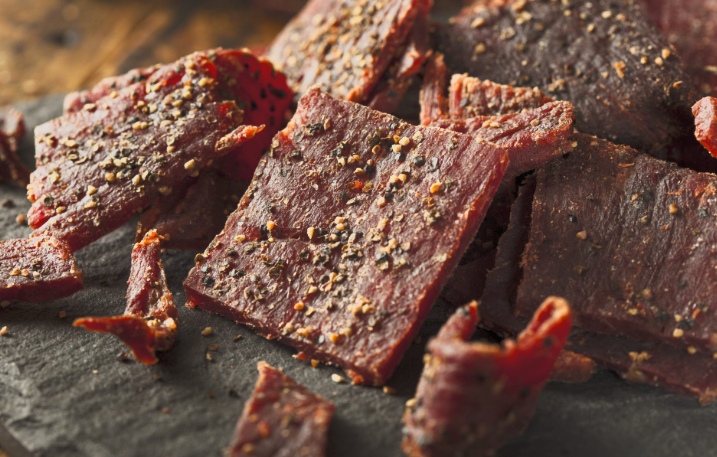
Choosing the Right Meat Source
When it comes to making primo beef jerky, not just any cut will do. You want lean cuts, like beef round or pork loin, where the fat is minimal. Why? Because fat can turn rancid, and that’s the last thing you want in your jerky. We’re going for lean trimmed perfection here, folks. This step isn’t just about flavor; it’s about making jerky that lasts, giving you that chewy, meaty goodness anytime, anywhere.
Importance of Quality and Cut
Lemme tell you, the quality and cut of the meat aren’t just details; they’re the foundation of great beef jerky. Picking the right cut, like a lean beef round, means you’re starting with the best base for drying and flavoring. And let’s not forget the importance of sourcing good-quality meat. You want meat that’s been treated right from pasture to plate. This isn’t just about ethics; better-quality meat leads to better-tasting jerky. Trust me, you can taste the difference.
Nonmeat Ingredients: Enhancing Flavor Naturally
Now, don’t get it twisted, beef jerky ain’t all about the meat. The nonmeat ingredients you choose are what take your jerky from “meh” to “more, please”. We’re talking soy sauce for that umami kick, a bit of sodium nitrite to keep things fresh, and don’t forget the spices. This is your chance to get creative, to blend tradition with whatever tastes good to you. The right combination of flavors can transform simple dried meats into culinary masterpieces.
Spices, Marinades, and Natural Preservatives
Let’s talk about getting that flavor just right. You’ve got your soy sauce for depth, maybe some Worcestershire for a bit of tang, and then you dive into the spice rack. This is where your jerky gets its personality – spicy, sweet, smoky, you name it. But don’t sleep on the importance of natural preservatives like sodium nitrite. They’re the unsung heroes keeping your jerky safe and delicious for longer. Remember, making jerky is like painting with flavors; every ingredient adds a stroke to the masterpiece.
The Dehydration Process
Alright, folks, it’s time to bring the heat – literally. The dehydration process is where your jerky finally starts to take shape. You’ve got your meat all seasoned and ready; now it’s about pulling out all that moisture without losing the flavor. This step is crucial, a make-or-break moment for your jerky. Get it right, and you’re a snack-making hero. But fear not, we’re here to guide you through the drying process, from traditional sun-drying methods to using high-tech dehydrators. Let’s turn up the dial and get drying.
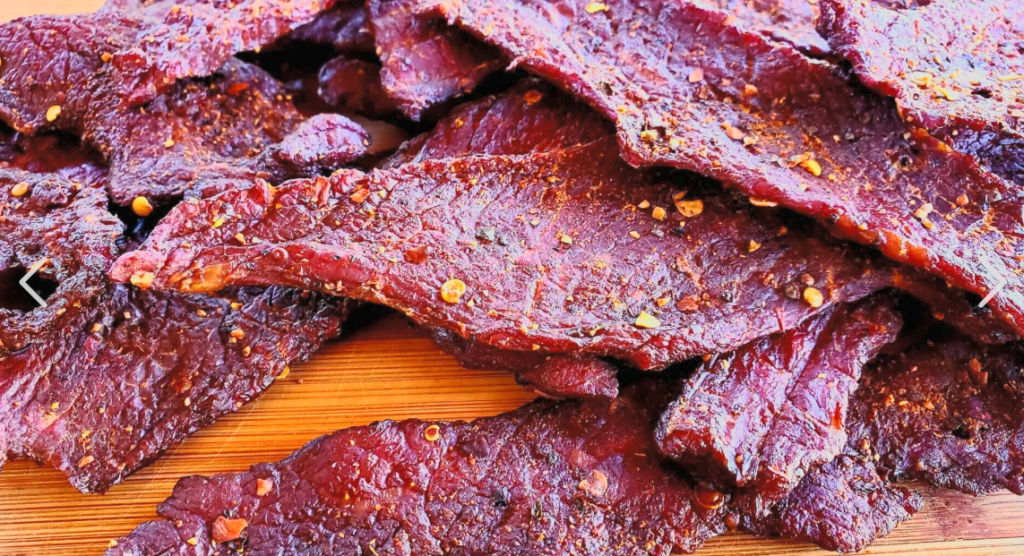
Traditional vs. Modern Methods
Jerky making has come a long way from just leaving meat out to dry under the sun. Don’t get me wrong, there’s a rustic charm to traditional methods, but modern dehydrators have changed the game. These gadgets let you control the temperature and airflow, making the drying process faster and more consistent. Plus, you don’t have to worry about bugs getting a free snack. Whether you’re a fan of the old-school approach or all about that tech life, there’s a jerky-making method out there for you.
Open-Air Sun Drying to Advanced Dehydrators
From hanging strips of meat in the open air to loading up state-of-the-art dehydrators, the art of making jerky has evolved. Open-air sun drying has its roots in ancient practices and relies heavily on the right conditions. On the flip side, modern dehydrators give you the luxury of time-saving convenience and precision. With settings to control, you become the master of moisture, crafting jerky that’s just right. It’s a journey from the past into the future, with delicious results every step of the way.
Equipment Essentials for Making Beef Jerky
So, you’re ready to take the plunge and make your own beef jerky, huh? Well, you’re gonna need the right tools for the job. We’re talking about slicing your meat thin and even, keeping those drying temperatures consistent, and making sure your jerky gets just the right amount of air flow. Don’t worry, though; you don’t need to break the bank or turn your kitchen into a science lab. With a few essentials, you’ll be on your way to making incredible homemade beef jerky in no time.
Mesh Non-Stick Dehydrator Mats and Stainless Steel Mesh Trays
So, mesh non-stick dehydrator mats and stainless steel mesh trays, huh? Picture this: you’re in your kitchen, ready to transform a big ol’ piece of beef into jerky. You’ve got your secret recipe marinade and the best cut of meat. Now, where to lay it? Mesh non-stick mats, that’s where. These slick little wonders stop your budding jerky from sticking, making cleanup a breeze. And those stainless steel trays? They’re the sturdy chariots that carry your precious jerky through the drying odyssey, uniformly exposing every strip to that warm, dry air. Choosing the right gear makes all the difference – like picking the right tool for a job or the best bat for the ball game.
Understanding Tray Capacities: From 16 Tray to 240 Tray Systems
Let’s talk shop about tray capacities, folks. Starting at the humble 16-tray setup, suitable for the home jerky maker, all the way up to a whopping 240-tray beast for the commercial pros. It’s like comparing a backyard BBQ to a full-blown steakhouse. More trays mean more beef strips drying at once, which translates to a serious amount of jerky to share—or not. Whether you’re just starting out or running a jerky-making empire, the size of your setup decides how much you can crank out. It’s simple math: more trays, more jerky, more happy faces.
Food Safety Considerations
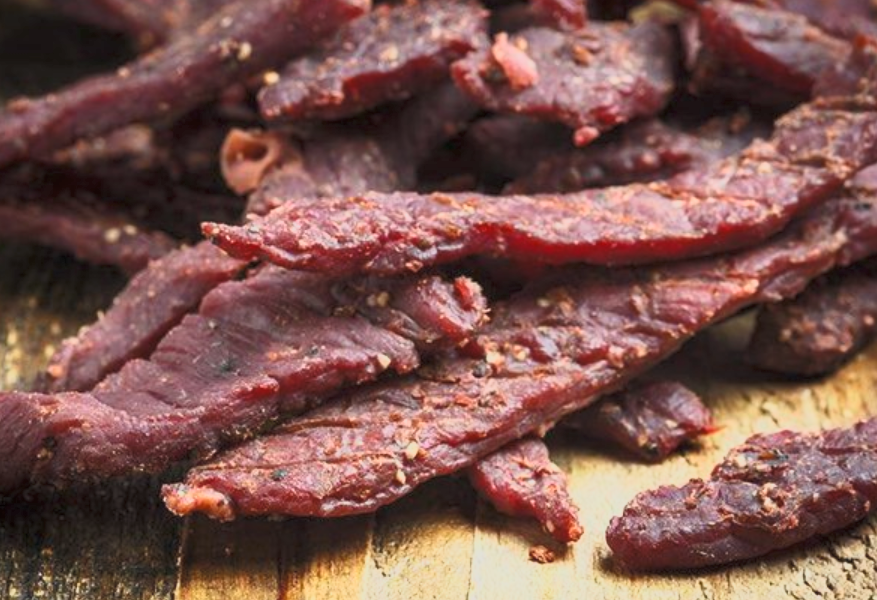
Now, food safety isn’t the most exciting part of making jerky, but it’s like the brakes on your car – you really need them to avoid disaster. Especially when dealing with meat, you’ve gotta play it safe to dodge those invisible little troublemakers known as bacteria. So, pull up those food safety guidelines like your favorite recipe, and let’s keep the jerky safe and tasty./
Key Food Safety Issues in Jerky Preparation
Alright, making homemade jerky is cool and all, but we gotta talk about those sneaky little critters – harmful bacteria. Even the toughest cowboys of the Wild West had to worry about ’em. Whether it’s beef strips, turkey jerky, or some wild game you hunted yourself, those bacteria don’t discriminate. And remember, frozen beef needs a warm-up session—cooked to 160 F—before hitting the drying process. This ain’t just a suggestion; it’s like the golden rule to keep your jerky out of trouble.
Preventing Bacterial Growth
Look here, preventing bacterial growth in your jerky is kinda like keeping pests out of your garden. You wouldn’t let the fox guard the henhouse, right? So, when we’re drying out those meat and poultry strips, they gotta be cooked first. Why? It kicks those harmful bacteria to the curb. Adding some sodium nitrite to the mix works wonders too, like a secret weapon against bacteria, keeping your jerky safe and extending its shelf life. Imagine, jerky so good and safe, even your grandma would approve.
Adhering to Food Safety Guidelines
Sticking to food safety guidelines is as crucial as following a treasure map to the letter—you wouldn’t want to miss the mark. It’s all about keeping things clean, from your hands to your food dehydrator. Speaking of which, always start with thawed meat, ideally thawed in the fridge. Frozen meat on the counter? Big no-no. Just think of it as keeping your jerky’s flavor locked in and the bad guys out.
Proper Handling and Storage Practices
After crafting the perfect batch of jerky, don’t drop the ball on storage. Proper handling and keeping that jerky in tip-top shape is like storing your winter clothes in the summer – you do it right, and they’ll be good as new when you need them. Keep your jerky in airtight containers or zip-lock bags, away from sunlight and heat. It’s like a mini vault for your jerky, keeping it fresh and ready to enjoy. Because nobody likes stale jerky, right?
Advanced Techniques and Tools
So, you’ve got the basics down and you’re ready to level up your jerky game? Welcome to the world of advanced techniques and tools, where the jerky magic really happens. With the right gear and a few tricks up your sleeve, you’ll be making jerky that could knock the socks off a cowboy. Buckle up, because we’re about to dive into the deep end of jerky making.

Scaling Production with Industrial Equipment
If you’re dreaming big and thinking about turning your jerky passion into a booming business, you’re gonna need the right equipment. It’s like upgrading from a go-kart to a racecar – the right tools can make all the difference. Industrial dehydrators and slicers will have you producing jerky so good, people will line up around the block. Ready to scale up? Let’s get that jerky empire started.
Zone-Based Dehydrator Configurations (1 Zone / 16 Tray to 4 Cart / 240 Tray)
When we talk about zone-based dehydrator configurations, think of it as the control center of your jerky operation. Whether you’re operating on a small scale with a 16-tray setup or running a 240-tray juggernaut, zoning helps you manage different batches all at once. It’s like being the conductor of a symphony, but instead of music, you’re orchestrating the perfect dryness and flavor for your jerky. Each zone can be fine-tuned for temperature and humidity, making sure every batch is just right.
Culminating Your Jerky Journey
Wrapping up our jerky journey, it’s clear this isn’t just about drying some meat; it’s an art form, a tradition, and for some, a way to make a living. From the humble start in your kitchen to potentially running your own jerky business, it’s been quite the ride. Like a good piece of jerky, it’s about savoring the process as much as the final product. So, here’s to your jerky journey—may it be as flavorful and fulfilling as the jerky itself.

Recipes and Creative Examples
Diving into recipes and creative examples, let’s get our hands dirty with some jerky marinade magic. Grab your soy sauce, Worcestershire sauce, and a bit of liquid smoke for that added flavor punch. Mix it with a teaspoon here of garlic powder and onion powder there, and you’ve got yourself a jerky marinade that’ll sing. Remember, lean meat’s your best bet, sliced into strips of meat with visible fat trimmed off. Marinate, cook the meat thoroughly, toss it in your dehydrator, and voilà — you’ve turned simple ingredients into jerky gold. Get creative, mix it up with 2 to 3 different marinades, and watch your jerky become the talk of the town.
Exploring Global Jerky Variations
Did you know the history of beef jerky spans across continents? From the South American Ch’arki to the African Biltong, every corner of the world has its take on this dried meat delicacy. It’s like jerky’s been the global snack before the word ‘globalization’ even existed. Delving into these variations, with their unique spices and preparation methods, is like taking a world tour from the comfort of your kitchen. Who knew jerky could also be a ticket to cultural enlightenment?
From Hobby to Commercial Production
Making the leap from jerky hobbyist to commercial producer is like going from singing in the shower to performing at a concert. It’s big, it’s bold, and it takes guts. But with the right approach, your jerky could be the next big hit in the snack world. Ready to make that jump? Let’s turn up the volume on your jerky production.
Regulatory Aspects and Market Entry
Before you start selling your world-class jerky, you’ve got to get acquainted with the regulatory side of things. It’s like making sure you have a driver’s license before hitting the highway. From food safety standards to packaging requirements, getting your ducks in a row ensures your jerky business runs smooth as butter. Entering the market might sound daunting, but with the right preparation, your jerky could be on shelves and in bellies in no time. So, let’s get to it and make your jerky dreams a reality.
Final Thoughts on the World of Beef Jerky
We’ve chewed over a lot, from ancient traditions to the beef jerky bag you snag at the corner store. This snack’s journey, much like a fine piece of jerky itself, has been long and flavor-packed, marinated in history and dried in the winds of innovation. It’s more than just a quick bite; it’s a testament to human ingenuity in preserving and savoring the simple goodness of meat. As we look ahead, beef jerky stands as a symbol of our ability to blend traditions with modern tweaks for that perfect, protein-rich munch.
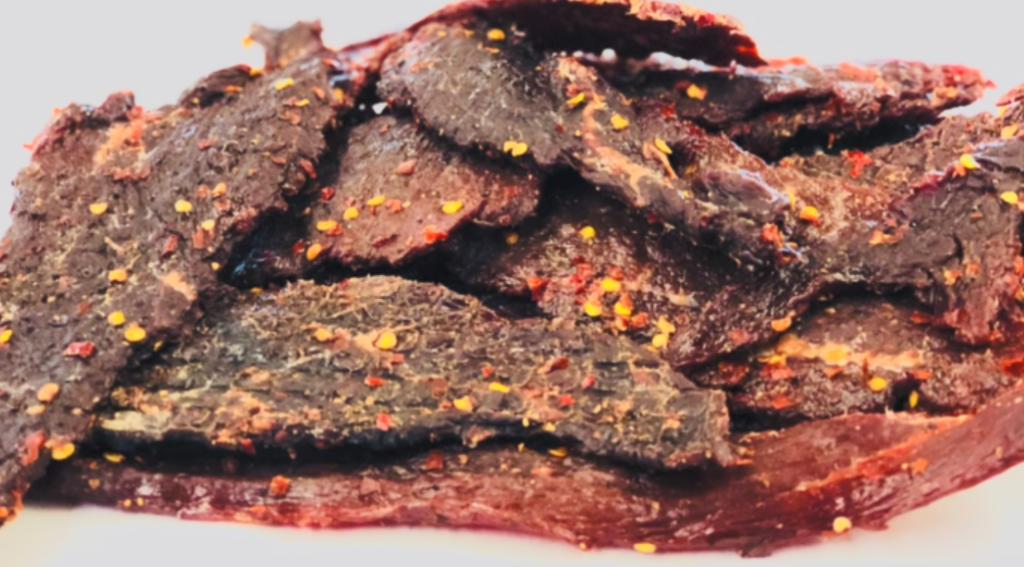
The Ongoing Evolution of Jerky Making
The art of jerky making is like a river that never stops flowing. Once upon a time, it was all about the ancient Incas and their ch’arki; fast forward, and today, we’ve got everything from solar-powered dehydrators to recipes that could make your grandma’s cookbook blush. Jerky’s evolution isn’t just about keeping meat from going bad; it’s about refining a source of nutrition that feeds our adventures, our workdays, and our moments of leisure. It’s a rich history on a strip of dried meat, and guess what? We’re not even close to the end of this savory saga.
Embracing Tradition While Leveraging Modern Innovations
Listen up, tradition and innovation aren’t squaring off in a boxing ring; they’re shaking hands in the kitchen. Yes, sir, making jerky today means tipping your hat to the ways of Native Americans while also giving a nod to the slick, stainless steel dehydrators humming away in artisanal jerky shops. We’re slicing meats thinner, seasoning them with everything from brown sugar to exotic spices, and drying them with precision-controlled heat. This blend of old-school wisdom and cutting-edge tech isn’t just making jerky better; it’s turning it into a craft. And as we innovate, we keep a piece of the past in every chew, honoring a delicious snack that’s always ready for the future.



